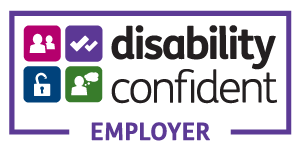Across the UK, the delivery of rehabilitation services is evolving rapidly, and occupational and physical therapy is no exception. Telerehabilitation is transforming how occupational therapists (OTs) and physical therapists (PTs) engage with patients by making therapy sessions more accessible, flexible, and effective. For rehabilitation professionals, understanding how to apply best practices in telerehabilitation practice is crucial to delivering safe, evidence-based, and patient-centred care.
This blog explores the opportunities, requirements, and practical considerations for implementing telerehabilitation in clinical practice.
The Role of Telerehabilitation in UK Healthcare
Telerehabilitation involves the remote delivery of rehabilitation services through digital technologies such as secure video consultations, interactive exercise platforms, and remote monitoring devices. Once considered only in exceptional circumstances, the use of telerehabilitation surged during the COVID-19 pandemic and continues to grow as NHS trusts and private providers adopt hybrid models combining in-person and telerehabilitation care.
A recent systematic review found that telerehabilitation is not inferior to traditional physical therapy in improving physical function and quality of life across several conditions. Both occupational and physical therapists can now rely on strong evidence of the efficacy of telerehabilitation for adults, while clinical studies are also exploring telerehabilitation for children and paediatric populations.
For rehabilitation professionals, the evidence confirms that telerehabilitation may enhance patient outcomes and provide sustainable models of care in the future.
Benefits for OTs and PTs
In occupational therapy practice and physical therapist practice, telerehabilitation offers wide-ranging benefits:
- Extending services via telerehabilitation to rural or underserved communities.
- Supporting home-based telerehabilitation that reflects patients’ real-life environments.
- Reducing cancellations and improving continuity of care.
- Tracking progress through telerehabilitation technologies and validated tools.
From stroke rehabilitation to musculoskeletal physiotherapy, positive experiences with telerehabilitation highlight its role in long-term recovery, patient engagement, and satisfaction with telerehabilitation services.

Professional Requirements for OTs and PTs in Tele-Rehabilitation
To safely deliver telerehabilitation in physical therapy or occupational therapy:
- HCPC Registration – Therapists must maintain valid registration with the Health and Care Professions Council.
- Professional Memberships – Affiliations with the Royal College of Occupational Therapists (RCOT) or the Chartered Society of Physiotherapy (CSP) strengthen professional standing.
- Indemnity Insurance – Ensure cover includes telemedicine and remote rehabilitation services.
- CPD and Clinical Education – Engage in digital health CPD, including education for telerehabilitation, to build competence in technology use and digital physical therapy practice.
Best Practices in Tele-Rehabilitation for OTs and PTs
1. Use Secure and Compliant Platforms
Therapists must deliver care via telerehabilitation using platforms that comply with NHS Digital’s Data Security Standards and UK GDPR. Patient confidentiality is a cornerstone of safe telehealth practice.
2. Adapt Assessment Methods
Physical assessment and functional evaluations require creativity when delivered remotely. PTs can use range-of-motion demonstrations via video, while OTs may request patients to show their home environment.
3. Incorporate Assistive Technology
Telerehabilitation technologies, such as wearables and rehabilitation apps, can monitor physical function, exercise adherence, and progress in real time.
4. Maintain a Patient-Centred Approach
Effective telerehabilitation depends on patient engagement. Use clear instructions, goal-setting, and personalised therapy practice plans. Accessibility features, like captioning, should be offered where needed.
5. Document Thoroughly
Documentation in telerehabilitation sessions should follow HCPC standards and safeguarding guidance, mirroring in-person practice.

Practical Guidelines for Safe and Effective Telerehabilitation
Patient Selection and Consent
Not every patient is suitable for telerehabilitation intervention. Assess the safety of telerehabilitation, willingness to use telerehabilitation, and digital access. Shared decision-making and clear consent are essential, guided by therapy association recommendations.
Preparing for Sessions
Therapists must ensure patients have safe home environments, suitable equipment, and digital readiness. Validated outcome measures like the patient-reported outcome measures (PROMs) support tracking during telerehabilitation sessions.
Delivering Sessions
When providing telerehabilitation services, therapists should adapt exercises to digital formats, set escalation pathways for in-person care, and use structured therapy practice plans. Blending digital and physical exercises with coaching sustains engagement and reduces the risk of adverse events related to telerehabilitation.
Documentation and Follow-Up
All sessions must be documented in line with NHS digital health guidance. Accurate records ensure patient safety, continuity, and accountability in rehabilitation services.
Opportunities for Career Growth
Implementing telerehabilitation opens career opportunities for OTs and PTs across the NHS and private sectors. Rehabilitation professionals with experience in telehealth are increasingly sought after for:
- Community and remote care teams.
- Flexible locum, contract, and hybrid work.
- Roles integrating new telerehabilitation options and technologies.
Developing expertise in this area enhances employability and prepares therapists for future models of care.
Key Challenges and How to Overcome Them
- Digital Divide – Some patients lack access to devices or a stable internet. Therapists can provide alternative telerehabilitation options, such as printable resources.
- Clinical Limitations – Certain conditions require in-person sessions. A hybrid telerehabilitation programme combining virtual and in-person therapy supports safety.
- Patient Trust and Engagement – Building rapport in telerehabilitation practice requires empathy, consistency, and strong communication.
The Future of Tele-Rehabilitation in the UK
As part of the NHS digital-first strategy, services via telerehabilitation are expected to expand across diverse clinical settings. Research continues to explore the efficacy of telerehabilitation for adults with traumatic injuries, telerehabilitation for paediatric patients, and innovative platforms.
With the publication of regular updates and clinical practice guidelines on telerehabilitation being developed internationally, the future holds a blueprint for telerehabilitation that is more integrated, safer, and widely accessible.
Conclusion
Telerehabilitation offers OTs and PTs a proven, effective model for delivering care in occupational and physical therapy practice. By implementing telerehabilitation best practices, therapists can ensure safe, high-quality services.
While challenges remain, evidence shows that telerehabilitation is not inferior to in-person rehabilitation, providing lasting benefits to patients and professionals. For rehabilitation professionals, the utility of telerehabilitation represents both a clinical opportunity and a pathway for career growth in modern healthcare.
Start Your Next Role in Tele-Rehabilitation
Are you an OT or PT ready to expand your practice into tele-rehabilitation? Verovian AHPs Recruitment Agency connects allied health professionals with NHS and private sector opportunities where digital skills are in high demand. Join us to secure flexible roles that match your expertise and future-proof your career.
Register today and take the next step in your professional journey.






